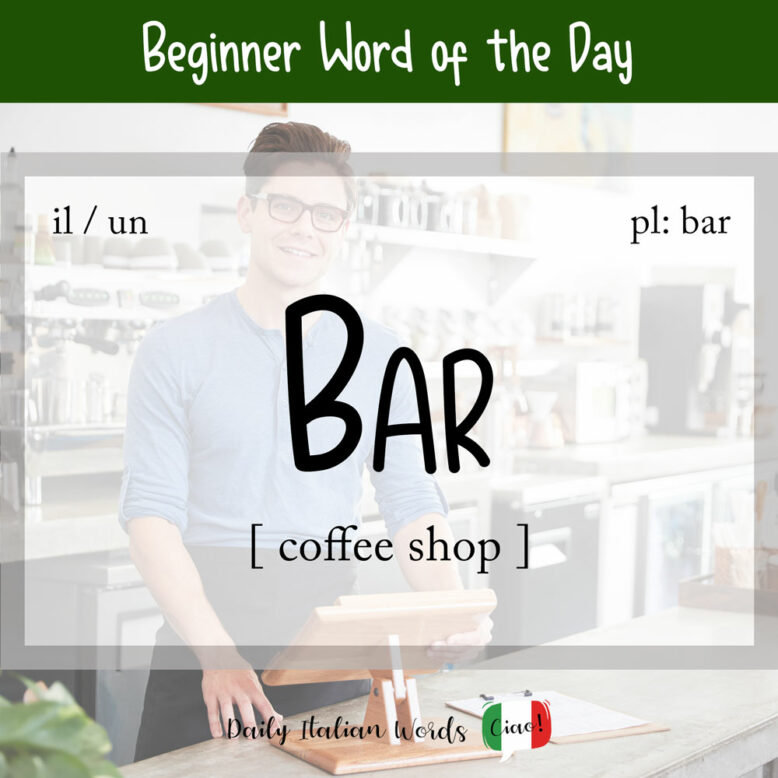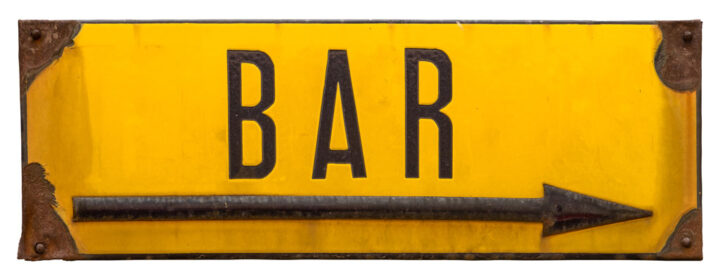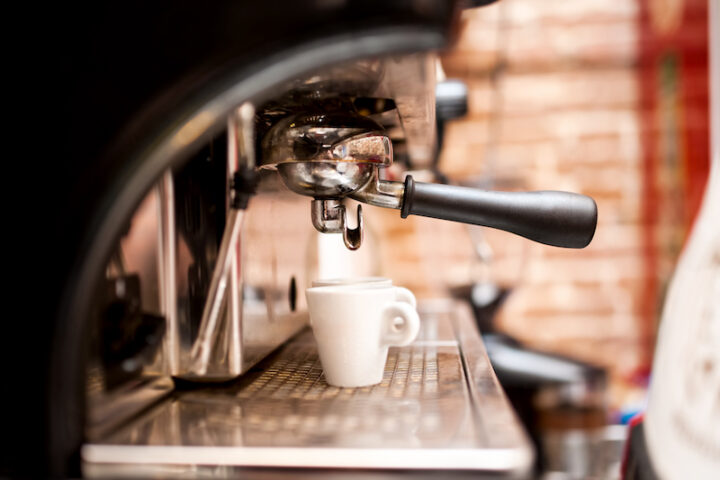When English speakers (or more specifically Americans and Canadians) hear the word bar, they tend to think of an establishment that primarily serves alcohol, or alternatively, the counter in a pub or restaurant where one can order refreshments. The term derives from the metal or wooden barrier that is located along the length of the bar.

Although the Italian word bar (masculine, plural: bar) was borrowed from English, it refers not to alcoholic drinking establishments but to coffee shops or cafés. A bar in the American sense of the word is a locale. Another word borrowed from English is pub which describes typical British pubs found in various Italian cities.

So popular are Italian bar that you will find one on every corner of the average city street. Sometimes there are even two or more located side-by-side. If you happen to visit an Italian city, try to count how many bar you spot in an hour: you’ll be surprised!
Bar are frequented by people of all ages but are extremely popular amongst working people and students who need to quickly recharge on the go.
C’è un bar in ogni angolo della città!
There’s a coffee shop on every corner of the city!

Trivia: “dehors” is the french word for outside. Italians use it to denote the outdoor area of a catering business such as a cafè or restaurant. Bar con dehors = Coffee shop with an outdoor area.
Although it is possible to sit down at a table in a bar, the most common ritual consists of drinking coffee (caffè) at the counter while chatting with colleagues, friends or the barista. And of course, being Italy, there are many varieties of coffee to choose between including:
- espresso (coffee made with a small amount of nearly boiling water that is forced under pressure through finely-ground coffee beans)
- macchiato (an espresso with froth)
- cappuccino (an espresso with milk and froth)
- decaffeinato (decaffeinated coffee)
- marocchino (an espresso with chocolate and froth)
- americano (a watered-down espresso)
- freddo (a cold coffee)
- corretto (an espresso with grappa)
- ristretto (similar to espresso but with less water, a “restricted” coffee)

Coffee is far from the only refreshment available at a bar however. You can also order soft drinks, pastries, alcohol, sandwiches (panini) and even ice cream (gelato).
Bar are not just found along the street. They can be part of a hotel, museum, theatre or cinema venue, and even offices.
Facciamo pausa pranzo? C’è un bar proprio qui sotto.
Shall we have a lunch break? There is a café just downstairs.
The word can also indicate the mini-bar where one keeps drinks to offer to guests at home. It is also called mobile bar where mobile means furniture.
Bar can also describe a small fridge (often hidden inside furniture) that you find in hotel rooms.
Heather Broster is a graduate with honours in linguistics from the University of Western Ontario. She is an aspiring polyglot, proficient in English and Italian, as well as Japanese, Welsh, and French to varying degrees of fluency. Originally from Toronto, Heather has resided in various countries, notably Italy for a period of six years. Her primary focus lies in the fields of language acquisition, education, and bilingual instruction.


